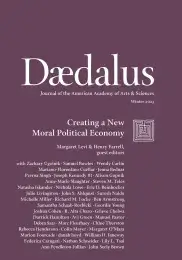How Should We Govern Housing Markets in a Moral Political Economy?
Building on Debra Satz’s argument that we can design our way out of noxious markets, this essay shifts toward questions of process, paying particular attention to the constraints posed when noxious markets generate supportive political constituencies. Using the case of U.S. housing policy, I make two claims. First, even intentional efforts at using market design to harness the capacities Satz identifies can produce cross-cutting effects, strengthening democracies on some dimensions and weakening them on others. Second, noxious markets can generate supportive constituencies that may undermine reform efforts. Ultimately, a moral housing market requires political supports that can help to broaden communities of fate, build political capacities of those who are persistently underrepresented in local deliberations, and encourage participants to reflect on the consequences of market design.
Debra Satz’s insightful essay proposes several alternative metrics beyond efficiency that we might use to evaluate markets. To what extent does a market strengthen social connections or help citizens develop their capabilities? To what extent does it strengthen or undermine democratic institutions? Satz also argues that noxious markets can be redesigned “to better serve important democratic goals.”1 This important intervention raises questions about the process by which a shift from a noxious to moral market might occur. Questions of process, in turn, raise questions about possible constraints, particularly those generated by noxious markets themselves. One such limitation is that even markets designed in ways to promote prosocial behavior can undermine other goals, such as inclusion and expanded communities of fate.2 Another is that noxious markets can also generate their own supportive constituencies. Thus, as we think about designing markets in ways that enhance democratic participation and institutions, we should also be attuned to the need for mechanisms that enable revision of market arrangements that exhibit these qualities.
In some regards, the U.S. federal government’s promotion of homeownership exemplifies the idea that policy-makers can design markets with the explicit aims of increasing social cohesion, strengthening democratic institutions, or building citizens’ civic capacities.3 From the building and loans movements of the late nineteenth century to the federal government’s own-your-own home campaign in the 1920s to the creation of federal mortgage insurance in the 1930s to the “ownership society” efforts during the George W. Bush and William Clinton administrations, the supposed effects on the strength of communities, citizens, and the nation have been a prominent public argument for promoting home ownership (and to justify strong government involvement in homeownership).4 As land economist Richard Ely remarked in the 1920s, “a homeowner is invariably a good citizen.”5 Banks and real estate brokers echoed this logic: newspaper advertisements in the 1920s argued that homeownership “plants the bed-rock of useful citizenship,” safeguards the “permanence of our institutions,” and “impels us to greater achievement, and to nobler purposes.”6 Homeowners would make for ideal citizens as well as stakeholders in a moral political economy.
Some of these predictions about the civic and moral power of homeownership have been realized, but in the process, they have also had corrosive effects on democracy. Homeowners turn out to vote at higher rates than renters in national and local elections; are overrepresented in local, state, and federal public offices; and are more likely to participate in local government meetings, such as city council meetings and planning and zoning commissions.7 But homeowners regularly harness their political and civic energy toward exclusionary ends. These include mobilizing to prevent racial and religious integration, to oppose the development of affordable housing, to increase the housing supply through changes to land use regulations, or to “hoard” public goods in their jurisdictions.8 To put this in the language of some of the other essays in this issue of Dædalus, efforts to design housing markets for prosocial aims have also operated to narrow participants’ communities of fate and encourage the pursuit of narrow self-interest. Such markets may be hard to reform because they generate supportive constituencies, again, operating to some extent how their proponents had envisioned.
This is not to dismiss Satz’s argument. Accepting the various metrics Satz presents, we might even extend our evaluation of markets to several of the dimensions laid out in Jenna Bednar’s essay in this volume, such as dignity and sustainability.9 But the possibility that markets can excel on one dimension while failing on another, and the possibility that this outcome may even enjoy political support, should sensitize us to the importance of including political mechanisms in market designs.
A moral housing market should be governed in ways that counter the propensity for citizens to occupy narrow and potentially exclusionary communities of fate. In practice, such efforts could mean measures that enable some decisions, including about public goods and affordable housing, are made in political venues with broader communities of fate. We see hints of these motives in efforts to appeal to state governments for land-use policies that have been rejected by local jurisdictions (as in California). Expansionary governance might also take the form of mechanisms to help reduce the barriers faced by community members who are less likely to participate in politics, for example, efforts to organize renters or to incentivize participation by groups that tend to be underrepresented in local political meetings.10 Finally, there is the need to regularly reevaluate whether outcomes that were anticipated to improve markets on these moral dimensions ultimately violate one or more other imperatives. The aim should be to create an equilibrium in which these different attributes can reinforce each other while still creating mechanisms for accountability and responsiveness, especially among those who tend to be most marginalized from housing markets and politics.11
